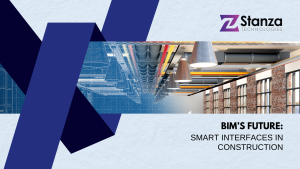Efficiency is the cornerstone of successful construction projects. To achieve this efficiency, precise planning, accurate estimation, and streamlined execution are essential. Building Information Modeling (BIM) stands out as a revolutionary tool in the modern construction landscape. At the heart of BIM’s effectiveness lies quantification — the systematic measurement and estimation of project components. This article delves into the pivotal role of quantification in BIM, exploring its various facets and the benefits it brings to construction projects.
The Importance of Quantification
Quantification in BIM encompasses several key processes, each essential for effective project management and decision-making. At its core, quantification involves measuring and counting building elements, conducting material takeoffs, and generating cost estimates. These tasks provide crucial insights into project scope, resource requirements, and budgetary considerations, laying the foundation for informed decision-making throughout the project lifecycle.
Measuring and Counting
The first step in quantification involves accurately measuring and counting the various building components that constitute a project. BIM software enables precise geometric analysis of building elements, allowing project stakeholders to determine lengths, areas, volumes, and quantities accurately. This detailed information is the basis for subsequent quantification processes and helps ensure that project requirements are thoroughly understood and accounted for.
Material Takeoff
Material takeoff is another critical aspect of quantification in BIM. Project teams can effectively plan procurement, manage inventory, and optimize resource allocation by extracting quantities of materials required for construction from the BIM model. BIM facilitates the automated generation of material quantities, reducing the risk of errors and enabling proactive management of material costs and availability. This ensures that construction activities proceed smoothly and efficiently, without delays or interruptions due to material shortages or miscalculations.
Cost Estimation
The most significant benefit of quantification in BIM is its ability to support accurate cost estimation. By associating cost data with building components, such as material prices, labor rates, and equipment expenses, BIM enables project teams to generate detailed cost estimates confidently. This comprehensive understanding of project costs allows stakeholders to make informed decisions regarding budget allocation, value engineering opportunities, and overall project feasibility. Moreover, BIM’s integration with cost estimation software streamlines the process, saving time and minimizing potential errors.
Benefits of Quantification in BIM
The implementation of quantification in BIM offers a multitude of benefits to construction projects:
- It enhances project planning and coordination by providing stakeholders with a clear understanding of project scope and requirements.
- It improves resource management by optimizing material procurement, minimizing waste, and maximizing resource utilization.
- It facilitates accurate cost forecasting, enabling project teams to make informed decisions that align with budgetary constraints and financial goals.
Quantification plays a vital role in maximizing construction efficiency within the framework of Building Information Modeling. Construction stakeholders can achieve greater precision, productivity, and profitability by leveraging BIM’s capabilities for measuring, counting, and estimating project components. As the construction industry embraces digital transformation, implementing quantification in BIM will remain essential for delivering successful projects in an increasingly competitive marketplace.










